Karate
Homepageصفحه
اول کاراته
Language
/ Sprache:. ![]()
Photo Galleries our Dojo گالري عكس
Course & Photo Gallery تمر ينها و مسا بقها
Body Power& Nutrition & Photoسبک جد يد رد
Prüfungsordnung Shotokan امتهان کاراته
Biographie
خدايا در برابر هرآنچه انسان ماندن را به تباهی ميکشاند مرا با ً نداشتن ً و ً نخواستن ً روين تن کن
![]()
Karate
„
Biographie - زند
گي نا مه 
For 40 years I learn karate and I was a teammember in the Iranian karate, also been involved with the following group: Rezayar/Tehran/IRAN/Kh. Takhte Tavus STR/Koutscheh Golriz. I feel lucky to be allowed to have studied with Sensei Abe, Mr. Farrokh Moshwegh, Sanat Garan, to Schirzad and Nosratieian in the Tehran /IRAN. I have retained the 5 rd Dan , black belt Shotokan. 2009
At the end of 1986 I came to Germany, and have since then striven to be open toward other people and to learn to understand their culture and faith. I try to accept people for who they are. I have been a DKV (Deutscher Karate Verband) member since 1993. I was allowed to study and train with Mr. La Grange and Mr. Olaf Kohlke from the DKV for ceveral years.
In my opinionn we must be self-confident and co-operate until we reach our goals realistically. There is not a past nor future in this world for me. I’m suddenly becoming aware of the uneasiness of the present. I fight with my fate and we shall not forget who we are and where we come from. I despise those who consider themselves better. We must respect each other and take others into consideration.
( German carats of federation.: DKV Dan Diplom ) من استاد کاراته در شهر اولد نبوگ هستم و مشگي دانه ۵ را از المان دار م

![]() As
a result of 30 years karate
I have prepared 2 books
and 2 CD
with photographs with the topics: "Karate- martial art,
selfdefense, bodycontrol" and "The
ultimate training program for the whole body, Lightning
& Nutrition"
دو
تا
کتاب
نو شته ام راجب
آموزش کاراته
As
a result of 30 years karate
I have prepared 2 books
and 2 CD
with photographs with the topics: "Karate- martial art,
selfdefense, bodycontrol" and "The
ultimate training program for the whole body, Lightning
& Nutrition"
دو
تا
کتاب
نو شته ام راجب
آموزش کاراته
.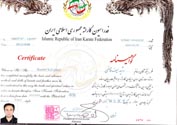 Karate Shotokan
IRAN 5. Dan-
Islamic Republic of Iran Karate Federation حکمه مشگي
دانه 5
Karate Shotokan
IRAN 5. Dan-
Islamic Republic of Iran Karate Federation حکمه مشگي
دانه 5
.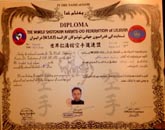 I`have
5.Dan Black a IRAN (style
Shotokan Karate) IRAN W.S.K.F-
IRAN -2015. حکمه مشگي
دانه 5
I`have
5.Dan Black a IRAN (style
Shotokan Karate) IRAN W.S.K.F-
IRAN -2015. حکمه مشگي
دانه 5
.. I`have
5.Dan Black (style
Shotokan Karate) I have been a DKV Germany.حکمه مشگي
دانه5
I`have
5.Dan Black (style
Shotokan Karate) I have been a DKV Germany.حکمه مشگي
دانه5
.. Exam list.:- c- examiner Licens
and- B
-examiner Licens DKV. حکمه
ا متحا ن گرفتن
شوتو
كان کاراته دو
Exam list.:- c- examiner Licens
and- B
-examiner Licens DKV. حکمه
ا متحا ن گرفتن
شوتو
كان کاراته دو
.. CERTIFICATE Concerning to Mr. Rashid Seif Ghazi acquaintanes to martial arts, confirm his qualifications for RAZMAVARAN
Coaching. حکمه آموزش
كاراته ر
زم اور
ن
CERTIFICATE Concerning to Mr. Rashid Seif Ghazi acquaintanes to martial arts, confirm his qualifications for RAZMAVARAN
Coaching. حکمه آموزش
كاراته ر
زم اور
ن
.
judges.: .حکمه داوري
.
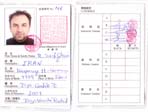 B- Instructors Licenses DKV / Germany and
IRAN . B- and C- حکمه
آموزش
كاراته
B- Instructors Licenses DKV / Germany and
IRAN . B- and C- حکمه
آموزش
كاراته
سن سي رشيد سيف قاضی ، رئیس شوتو كان کاراته دو المان در شهر اولد نبوگ و مسئول کمیته داوران
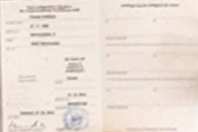 The
B-trainer license
Treiterausbildund DKV /
Germany - B- and C. حکمه
كاراته
The
B-trainer license
Treiterausbildund DKV /
Germany - B- and C. حکمه
كاراته
 Licenses DKV
Sound-Karate . حکمه
آموزش
كاراته
Licenses DKV
Sound-Karate . حکمه
آموزش
كاراته
![]()
My philosophy in karate is this: The goal is that you keep yourself under control and that you don’t look for trouble. Karate is thus a path to self control and acceptance; boasting should be avoided. Although very difficult, that is the way of karate.
My slogan: 1. Character 2. Sincerity. 3. Effort. 4. Etiquette. 5. Self- Control
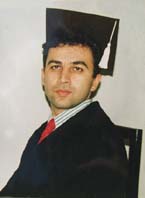
In
1985 I came to Germany, and since then have tried to be open toward other
people and to learn to understand their culture and faith. I try to accept
people for who they are. For me it would be the most beautiful thing if there
were a multi-cultural society in which one could work and live in peace with
one another. It is indeed beautiful that there are different cultures, i.e.
other skin colors, facial features, hair colors and languages. It would be
boring if everyone were to look alike. That’s why I decided to dedicate my
work to this topic. The impetus of my pictures is love, nature and society.
From 1976 until 1980 I studied painting and beautiful arts at a college named
Mirak in Teheran / Iran.
I studied Mirak at an academy in Tehran and at the Uni of Tehran in the
field of fine arts (painting) from 1980 to 1984. Between 1989 and 1994, I
studied graphic design at the University for the Arts in Bremen, Germany, from 1994 -1999 I studied Oldenburg at the university/ Germany and wrote my work over the center the Renaissance in Italy. In SS/ 2002-
2004 the CvO - university of Oldenburg
Germany I w as working in the Positon of a professor in
ART and Media.
![]()
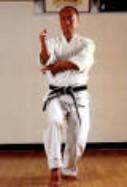
Professor Sensei Abe 9.Dan im Japan
كاراته
دويو ايران![]() Karate Do
IRAN
Karate Do
IRAN
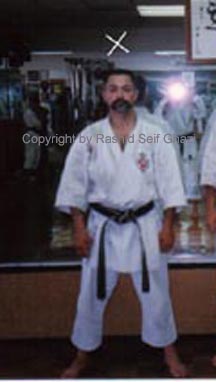
I happily consider myself with Mr. Sensei Farrokh Moshfegh 6 Dan Karate Shotokan. To be allowed to have learnt Dan in Teheran / IRAN

.jpg)
Mr.Sensei AHMAD SAFI 7.Dan Chief Instructor IRAN The World Shotokan Karate Do Federation W.S.K.F& Siener Dojo and Me.
To me became of 5. Dan, document of Mr. Sensei AHMAD SAFI lent. 2016
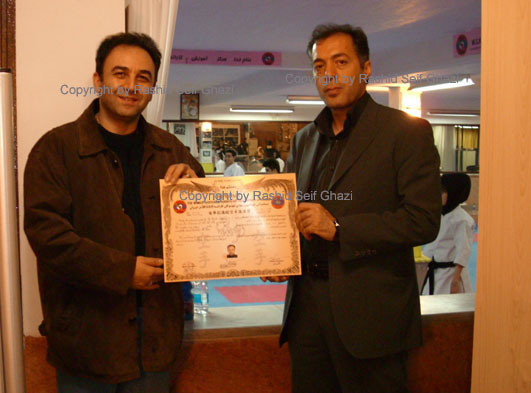
Mr.Sensei AHMAD SAFI 6.Dan Chief Instructor IRAN The World Shotokan Karate Do Federation W.S.K.F& Siener Dojo and Me.
To me became of 4. Dan, document of Mr. Sensei AHMAD SAFI 6.Dan lent. 2008
عكس من و استاد احمد صافي در ايران . جناب صافي درحال دادن حکمه مشگي دانه ٤ به من مي باشد
مركز سلامتي ايرانيان W.S.K.F مركز آموزش W.S.K.F استاد احمد صافي نماينده رسمي فدراسيون جهاني شوتو كان كاراته در ايران مي باشد. كه در حال حاضر همه روزه براي سنين مختلف آموزش كاراته را بصورت اصواي تحت نظارت استاد احمد صافي ارائه مي نمائيد.
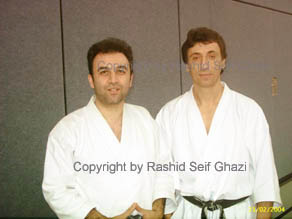
عكس من و ريس مسابقات قهرماني كاراته المان در سا ل 2004.2.21 DKV
right Mr.sensei Efthimios Karamitsos 6. Dan of the coaches of the national team and Left Me, Rashid Seif Ghazi . course 2.21.2004 with Bodo-Dojo Rastede / Germany - DKV
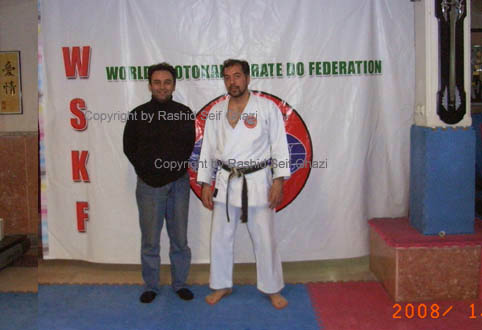
Mr.Sensei AHMAD SAFI 6.Dan Chief Instructor IRAN The World Shotokan Karate Do Federation W.S.K.F& Siener Dojo and My Rashid Seif Ghazi
I have got the Golden medallion and Cup CERTIFICATE :( Second International Tournament IRAN Zamin Azad University Cup) for karate from Mr. Sensei AHMAD SAFI 6.Dan. عكس من و استاد احمد صافي در ايران
مركز سلامتي ايرانيان W.S.K.F مركز آموزش W.S.K.F استاد احمد صافي نماينده رسمي فدراسيون جهاني شوتو كان كاراته در ايران مي باشد. كه در حال حاضر همه روزه براي سنين مختلف آموزش كاراته را بصورت اصواي تحت نظارت استاد احمد صافي ارائه مي نمائيد.
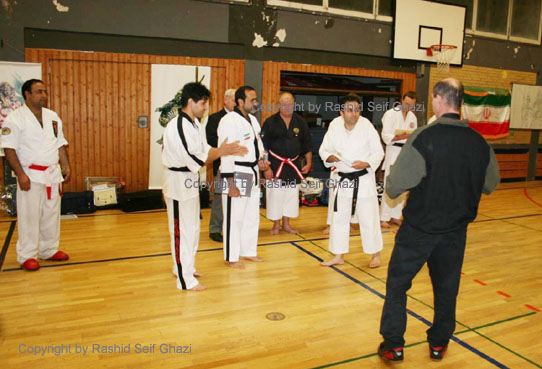

Rights: Sensei Majid Rajaei 9. Dan Karate Razmavaran/IRAN and I Rashid Seif Ghazi. I agree from Sensei Majid Rajaei 9.Dan CERTIFICATE Concerning to Mr. Rashid Seif Ghazi aquaintanes to martial arts, Confirm his qualifications for RAZMAVARAN Coaching. (IMAF.-European course. Place.: Emden Germany 15.12.2007) عكس من و استاد مجيد رجـــائی در المان
استاد مجيد رجـــائی ريس كاراته ر زم اور ن فدراسيون جهاني در ايران مي باشد
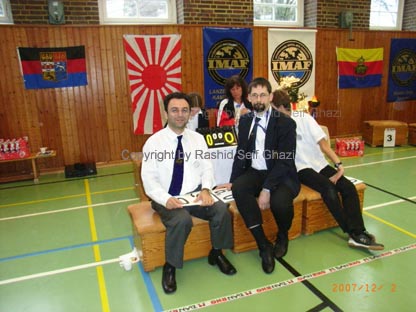
right Mr. Wolfgang Hermann and Left ,Me, Rashid Soaping Ghazi as a judge in tournament IMAF Tokon cup on 12/2/2007(IMAF.-European course. Place.: Emden Germany) عكس من در داوري مسابقات قهرماني كاراته المان
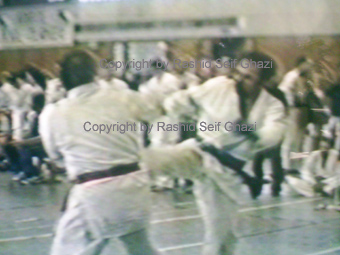
عكس من در مسابقات قهرماني كاراته المان در شهر برمن سا ل 2004
Mr. Rosen Dimitov 3. Dan and Rashid Seif Ghazi 4. Dan in the kumite tournament with gymnasium of the elementary school in Ganspe (Bremen/ Germany ). 08th May, 2004
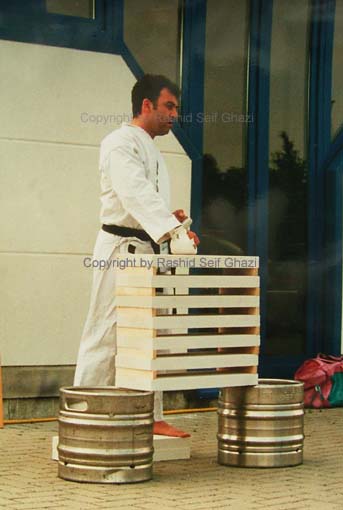
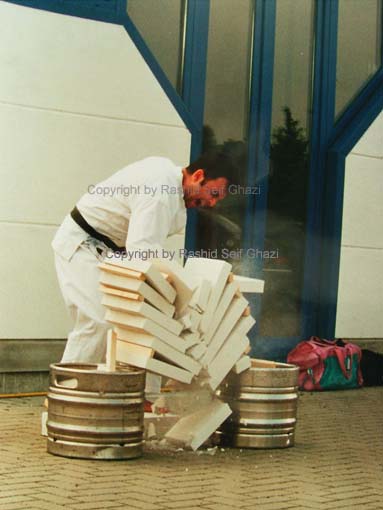
documentation and Video.. youtube : http://www.youtube.com/watch?v=7t054femwhE&translated=1
عكس من در المان سا ل 2001
in 2001 I have smashed, Rashid Soaping Ghazi, with " fit and fun " in Wardenburg / Germany seven lying on top of each other stone records with a fist push.
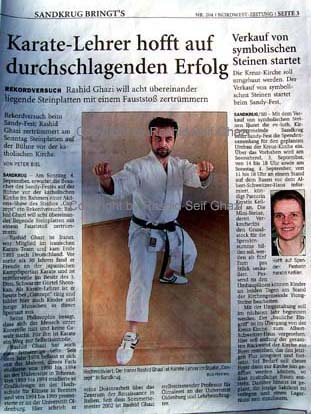
I have in castle Warden with fit and fun in 2001. Seven stone records recumbent about one another with a fist push smash
press.: Nordwest newspaper. Rashid Seif Ghazi Oldenburg /Germany و روز نامه
![]()
Karate yesterday and today
Karate developed in China more than one thousand years ago and later came to Okinawa. From there it reached Japan through Master Gichin Funakoshi, who was in those days a professor at the educational university of Okinawa. Master Gichin Funakoshi is considered to be one of the founders of modern karate. The term ‘karate’ (meaning ‘empty hand’) was coined for the first time by Gichin Funakoshi and was taught by him in Japan. Thus the word karate clearly implies Japanese karate. In 1936, professor Funakoshi created the Shotokan, and in the year 1955 the Japan Karate Association, which became recognized by the ministry of education in 1957. The Japan Karate Association today has over 100,000 active students in Japan. Professor Funakoshi was a very wise man, qualifying him to attach the aspects of mental attitude to the martial art. For professor Funakoshi, karate was not only a combat sport with which the limbs of the body are used as attack and defensive weapons, but also a way (DO) to shape character. He wrote: "Just as the bright surface of a mirror reflects everything which stands in front of it, and like a quiet valley that carries the most subtle sound, the karate pupil should cleanse himself of selfishness and evil in order to be able to deal with anything that may come across his path. That is what is meant by "Ieer" or kara. After the war, karate in Europe became known as an extremely tough kind of self-defense. Through physical and mental self-discipline, karate transforms the active person into a balanced human being, who possesses the highest regard for the life and the health of his fellow man.
The beginnings of modern-day karate date back to 560 AD when Daruma Boddhidharma, the founder of Zen Buddhism, left western India and traveled thousands of miles alone to teach in China. He found many students eager to listen to his ideas but physically unable to keep up with him. So he designed a method of training to develop his followers' physical strength, which he considered a crucial aid in attaining spiritual strength. His reasoning became the basis of karate-do, or “the way of the empty hand.” Although he felt that the way of Buddha was preached for the soul, he taught that “the body mind and soul are inseparab
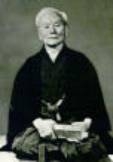 Shotokan Karate is one of the oldest and
most popular styles of Karate. It was developed at the beginning of the last
century by Master Gichin Funakoshi (1868-1957) from the southern Japanese island
of Okinawa.
Shotokan Karate is one of the oldest and
most popular styles of Karate. It was developed at the beginning of the last
century by Master Gichin Funakoshi (1868-1957) from the southern Japanese island
of Okinawa.
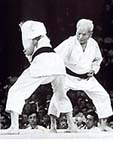
Two relatively different styles - in spirit as well as in mechanics - used to exist in Okinawa in late 19th Century: Shorei-ryu and Shorin-ryu The former was designed for well built people, placed emphasis on developing physical strength and was impressive in its shear power. The latter was light and quick, with fast strikes and counterattacks, designed for people who were small in size and very agile. After years of intense study of both styles, Master Funakoshi arrived at a new understanding of martial arts, and a novel style was created, that combined the ideals of Shorei and Shorin. As in all Karate styles it is Katas, formal sequen ces of basic techniques, that form the backbone of the tradition. The traditional Japanese martial arts, Judo and Kendo, two of the seven traditional paths to enlightenment in Japanese classical culture, were heavily centered around combat (Kumite). Master Funakoshi instead, in the centuries old Okinawa tradition, sought a path to spiritual depth through individual technique. Thus, Shotokan initially developed as a formal style with little Kumite application, instead focusing on breathing, releasing energy and outstanding mind and body control.
In 1922, the first Karate Demonstration was held in Tokyo by Master Gichin Funakoshi and had made a powerful impression on the Japanese public. After that, Karate became very popular and spread very fast in Japan. From the beginning, Master Funakoshi insisted on teaching Karate to college students. The first Karate-do Club was in Keio University. Today, Karate-do is spread into many countries around the world. In May 1948, the Japan Karate Association (JKA) was founded by the students of Master Gichin Funakoshi, and the standards of training (Kihon, Kata, Kumite) and competition were established.
The word Shotokan is composed of three kanji characters in Japanese. The sho character is taken from the word matsu which means pine tree. To is the character for waves. Pine Waves is supposed to mean "the sound that pine trees make when the wind blows through their needles." Some people also translate this to mean the waves that pine trees seem to make visually when bending in the wind. Master Funakoshi signed his works of calligraphy with the pen name Shoto. That is where the first part of the name of this type of karate came from. The word kan means building. The name Shotokan comes from the world's first karate dojo, which was constructed in 1939 by Funakoshi's students. They placed a plaque over the door that said "Shotokan", or " The Hall of Pine Waves", in honor of Funakoshi. This first dojo was completely destroyed in an American bombing raid on Japan in 1945.
![]()
Copyright © 2000 by Rashid Seif Ghazi.de